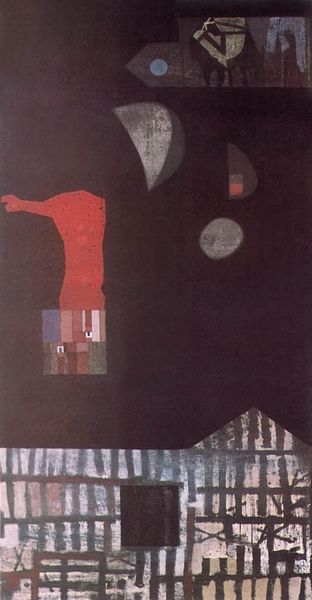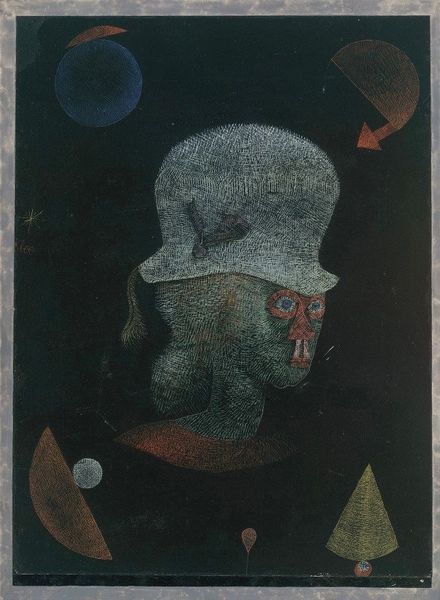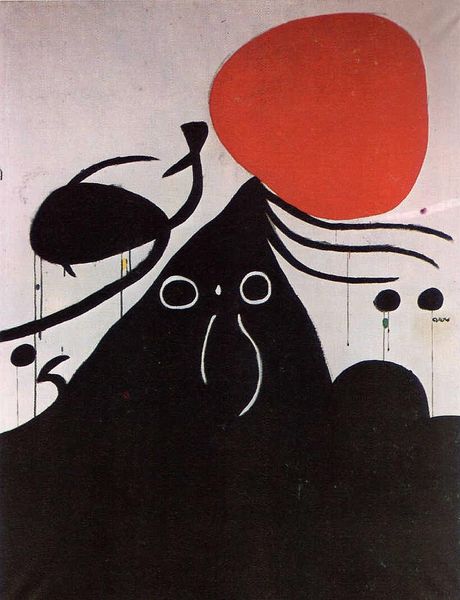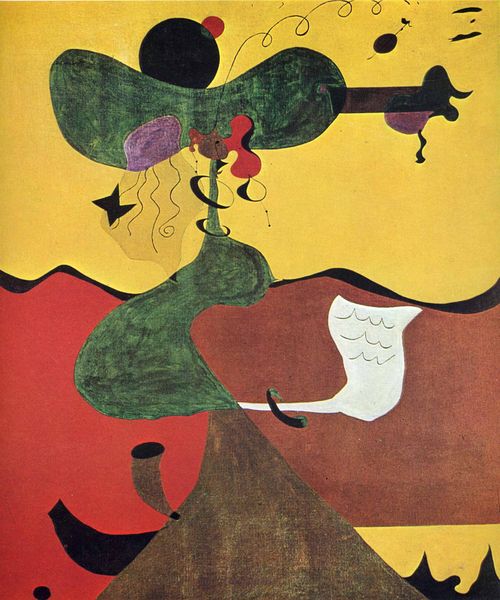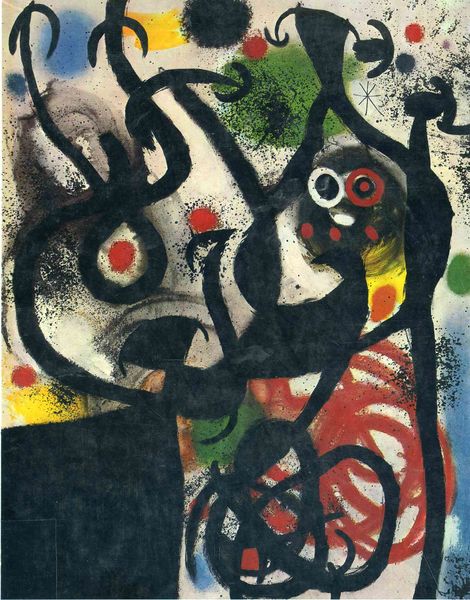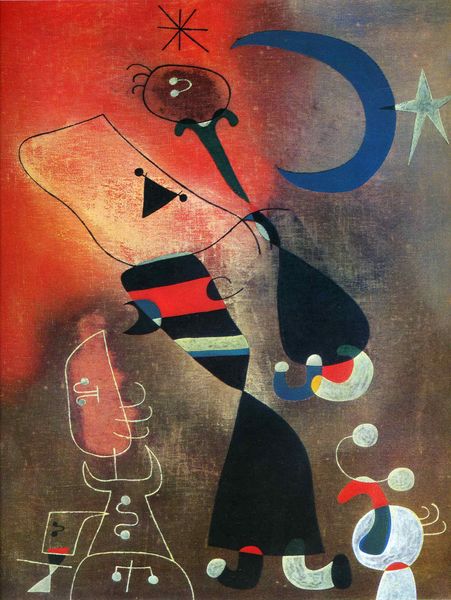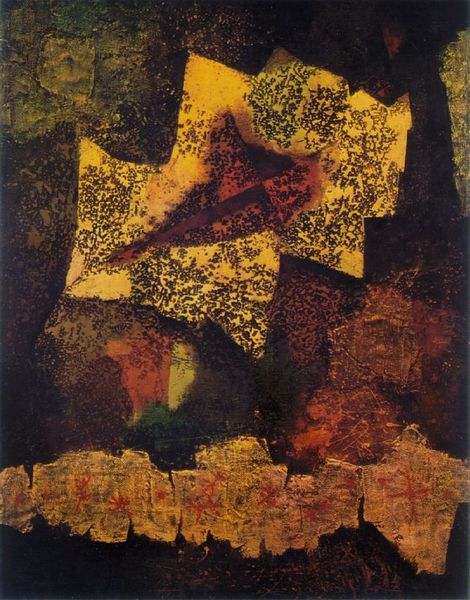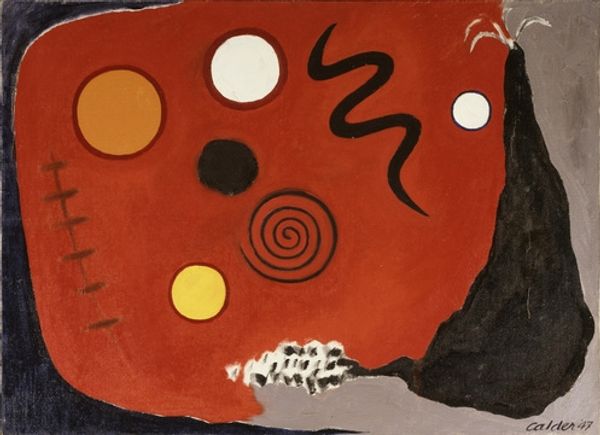
Dimensions: 21 x 26 cm
Copyright: Public domain
Editor: Here we have Paul Klee’s "Strong Dream," made with oil paint and tempera on paper in 1929. There's this figure resting under a large crescent moon and what appears to be the sun. The painting feels very symbolic, almost like a dreamscape, given the title. How do you interpret this work? Curator: It’s interesting you say dreamscape, because Klee was deeply engaged with ideas about the subconscious and primal imagery that connected to broader socio-political anxieties of the interwar period. Considering the historical context, dreams served as a space for both individual and collective anxieties to manifest. The “strong” aspect of the dream points to an intense, perhaps even overwhelming, psychological state. Does the color palette and figure's pose evoke a specific feeling in you? Editor: It definitely has a slightly unsettling feel to it, maybe the dark background. And that figure…almost like a puppet abandoned under the intense gaze of the moon and sun? Curator: Precisely. Klee often used simplified, childlike forms in his work to tap into what he saw as a more authentic and universal visual language, connecting back to more primitive artistic practices and spiritual rituals. We have to also consider Klee's tenure at the Bauhaus, a space with progressive ideals towards craft and dismantling of elitism in art. How might Klee’s artistic output reflect the politics of art-making? Editor: So you're saying this seemingly simple image reflects his desire to make art accessible while also dealing with deeper societal issues? It's a bit of a contradiction then; seemingly simple, but with layers of meaning related to the artist's political views and historical moment. Curator: Exactly! The accessibility and directness allowed the art to engage a broader public while still subtly critiquing societal structures and artistic norms of the time. Editor: I never considered Klee’s work as a social commentary. I will definitely be more conscious of the political nature of art institutions. Thank you. Curator: Indeed, it is easy to overlook. It goes to show how artworks and artists participate in public life, whether directly or indirectly.
Comments
No comments
Be the first to comment and join the conversation on the ultimate creative platform.
